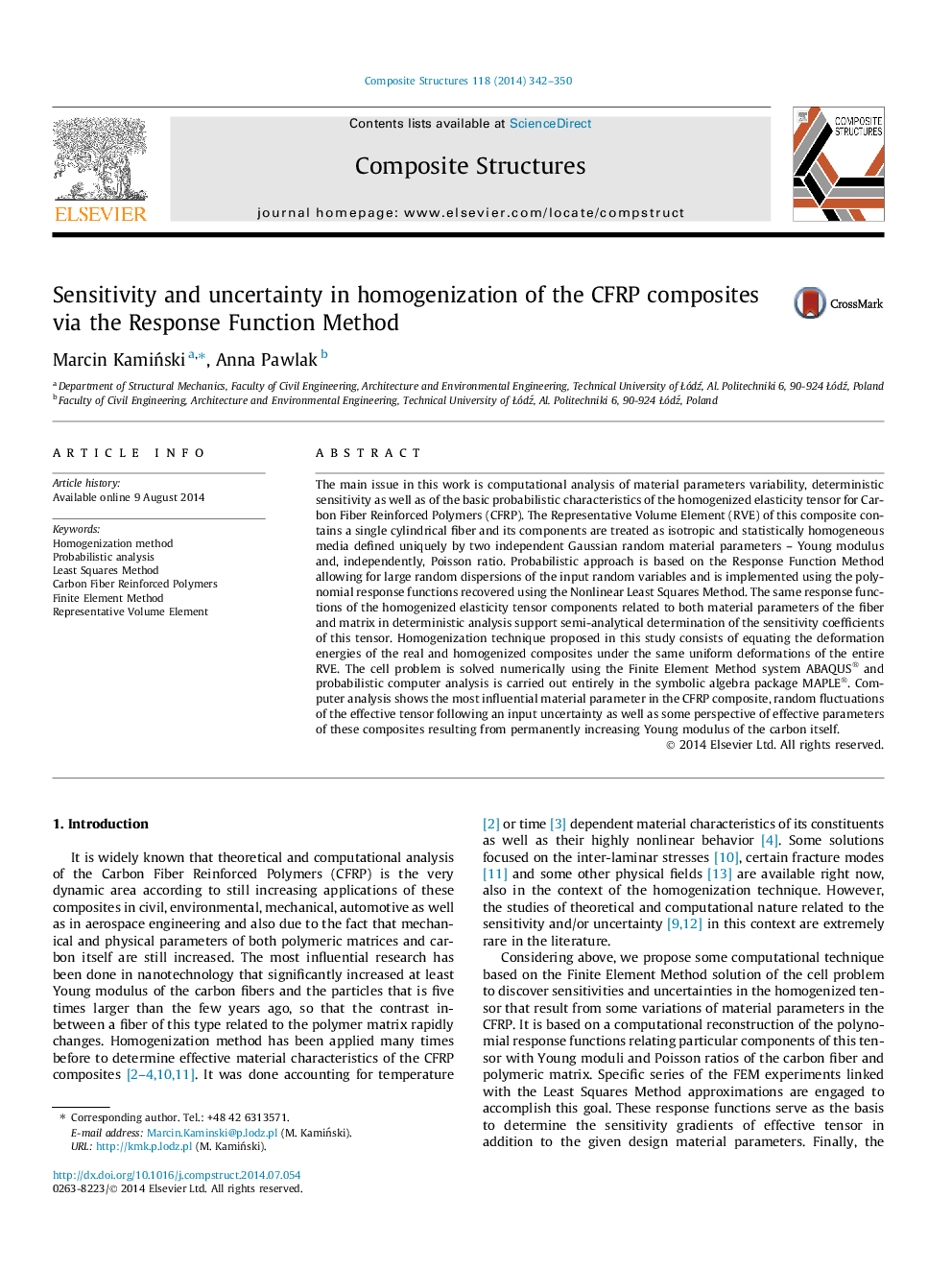| Article ID | Journal | Published Year | Pages | File Type |
|---|---|---|---|---|
| 6707585 | Composite Structures | 2014 | 9 Pages |
Abstract
The main issue in this work is computational analysis of material parameters variability, deterministic sensitivity as well as of the basic probabilistic characteristics of the homogenized elasticity tensor for Carbon Fiber Reinforced Polymers (CFRP). The Representative Volume Element (RVE) of this composite contains a single cylindrical fiber and its components are treated as isotropic and statistically homogeneous media defined uniquely by two independent Gaussian random material parameters - Young modulus and, independently, Poisson ratio. Probabilistic approach is based on the Response Function Method allowing for large random dispersions of the input random variables and is implemented using the polynomial response functions recovered using the Nonlinear Least Squares Method. The same response functions of the homogenized elasticity tensor components related to both material parameters of the fiber and matrix in deterministic analysis support semi-analytical determination of the sensitivity coefficients of this tensor. Homogenization technique proposed in this study consists of equating the deformation energies of the real and homogenized composites under the same uniform deformations of the entire RVE. The cell problem is solved numerically using the Finite Element Method system ABAQUS® and probabilistic computer analysis is carried out entirely in the symbolic algebra package MAPLE®. Computer analysis shows the most influential material parameter in the CFRP composite, random fluctuations of the effective tensor following an input uncertainty as well as some perspective of effective parameters of these composites resulting from permanently increasing Young modulus of the carbon itself.
Keywords
Related Topics
Physical Sciences and Engineering
Engineering
Civil and Structural Engineering
Authors
Marcin KamiÅski, Anna Pawlak,
